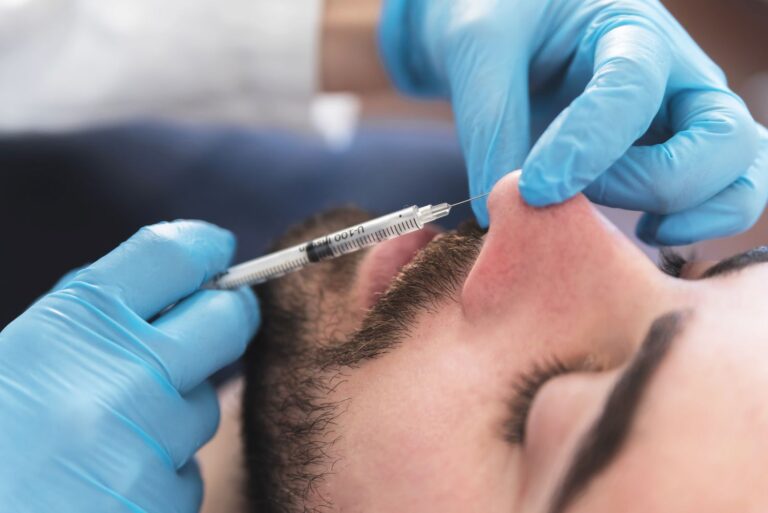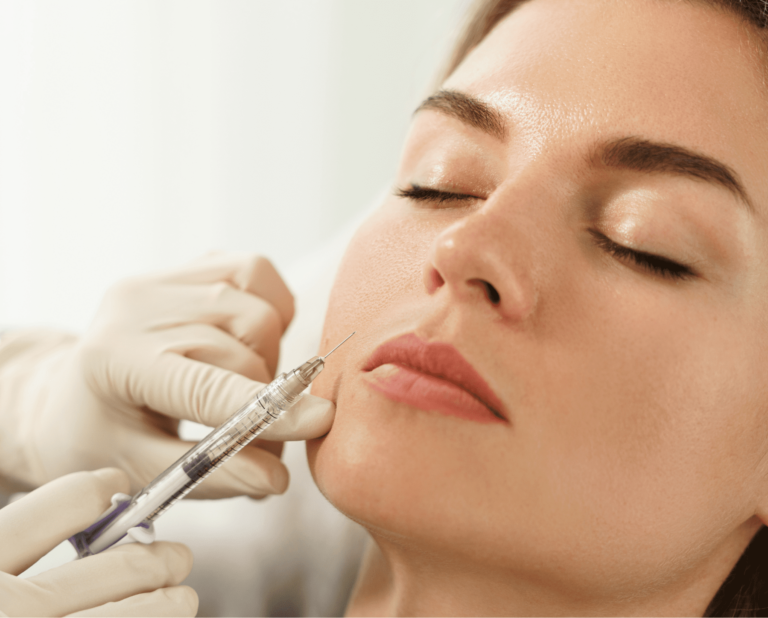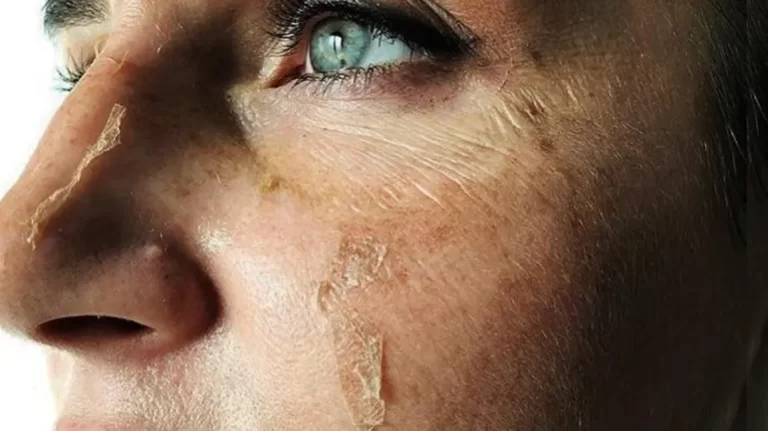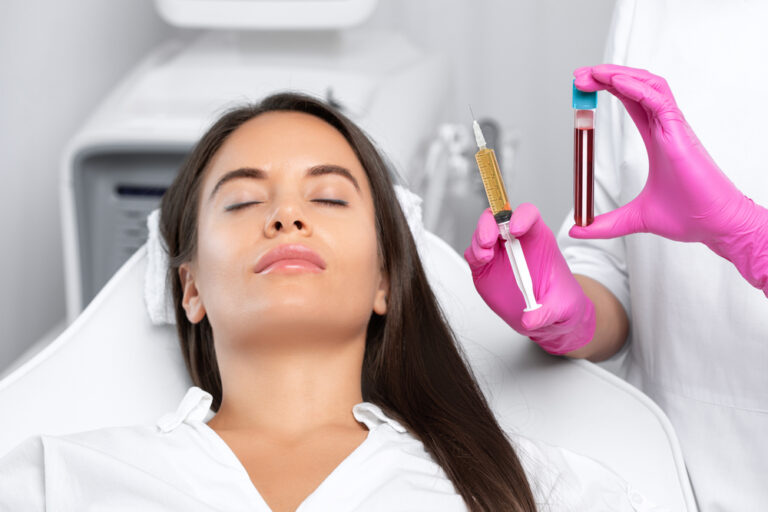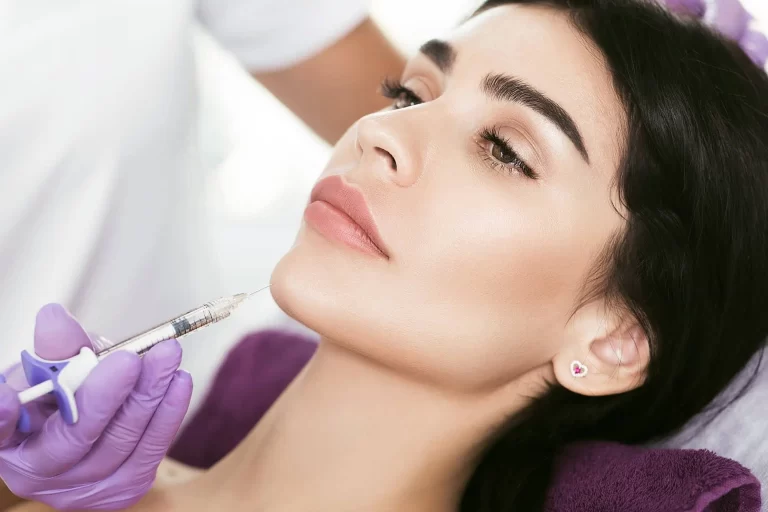Skin care micro-dosing has exploded into the beauty sensibility in recent weeks. While we’ve long moved past the ‘more is more’ mentality; slapping on skin care formulas with abandon and stripping your skin raw in the process; it appears beauty fans are sprinting in the opposite direction, using formulas with teeny-tiny concentrations or ‘micro-doses’ to gently train their skin without compromising barrier health. A gentle prod rather than a full-fledged bulldoze.
The ‘low and slow’ approach is certainly popular, but when it comes to dermatology, it’s not as simple as downsizing your skin care. So, does micro-dosing live up to its small but potent billing?
What exactly is skin care micro-dosing?
It’s the same concept as microdosing with other substances: Rather than going full throttle once or twice a week, you use extremely low concentrations of active ingredients such as 1/10 of a typical application on a daily basis. It’s intended to be a gentler, more gradual approach to reaping the benefits of potent and potentially irritating skin care ingredients like retinoids, AHAs and BHAs.
Instead of using smaller concentrations, try using a smaller dollop of product. For example, instead of liberally applying a half-filled dropper of product every day, you can apply just a few dots of a serum every day.
Both methods are considered micro-dosing; the goal is to keep your skin barrier intact and gradually train your skin every day rather than ‘shocking’ it every now and then with, say, a powerful exfoliator.
Who is it useful for?
Micro-dosing is especially beneficial for those with sensitive skin or a weakened barrier, as their skin is more prone to irritation and dryness. They can experiment with some of these potent skin care actives by micro-dosing without damaging their skin.
However, micro-dosing can theoretically benefit any skin type; at least temporarily. Think of it as a warm-up before the main event. Assume you’ve recently embarked on the retinoid journey, it may be beneficial to begin with a micro-dose and gradually increase to higher concentrations as tolerated. Just as you would train for a marathon, you should train for your skin care routine.
What is the process of micro-dosing?
The million-dollar question is whether the benefits will be achieved at such low concentrations? It depends.
There is a medical concept known as the ‘dose-response curve’, in which you don’t see any therapeutic benefits of a medicine until you exceed a certain dose; once you reach the maximum effect, any additional doses can cause side effects rather than benefits. Imagine a bell curve, with each person having their own sweet spot. When it comes to science, she claims that you can apply the same logic to some skin care ingredients.
Retinoids
Retinoids are popular for promoting collagen production and reducing signs of ageing such as fine lines, and a high-strength product has a concentration of 0.3 to 1 percent. One study sought to determine how low they could go to maintain results, and they discovered that a 0.05 percent tretinoin cream could still improve the appearance of fine lines after 24 weeks, but 0.01 percent and 0.001 percent did not.
Retinoids have many benefits to skin other than collagen synthesis, which may be ‘turned on’ at lower doses. They brighten the skin, help to even out pigment irregularities, stop collagen degradation, and stimulate the skin’s own production of hyaluronic acid. While a micro-dose of 0.01 percent may not be enough to stimulate collagen formation deep within the cell, you may notice improvements in skin texture and tone.
OTC retinols, on the other hand, are usually less irritating and potent, so you might be able to get away with a higher concentration.
AHAs and BHAs
Many AHAs like glycolic acid, lactic acid, and others; are formulated at 10% or higher concentrations, which some people may find too irritating for their skin. Both glycolic and lactic acid can be effective at 8% concentrations so, if you want to micro-dose, start with a lower concentration and work your way up.
Keep in mind that AHAs have different molecular sizes, which means they penetrate your skin at different rates for example, glycolic acid is smaller in size than lactic or mandelic acid, so it can sink into the pores quickly, causing irritation. All of this is to say that depending on the AHA, you may prefer a slightly smaller or larger micro-dose.
Products containing BHAs, such as salicylic acid, typically have a concentration of 0.5 to 2 percent. So consider 0.5 percent a’micro-dose’ for a leave-on product. It works at low concentrations, but higher concentrations are known to be more effective.
Vitamin C
Vitamin C sensitivities are uncommon, but L-ascorbic acid, the most active form of vitamin C, can irritate those with hypersensitive skin. In that case, you can always choose a serum that contains a more stable form of vitamin C, or if you prefer to micro-dose, just know that a concentration of at least 8% but no more than 20% of vitamin C has been shown to be most effective for stimulating collagen synthesis.
A micro-dose lower than that may still provide antioxidant benefit, but you’re better off using a full dose of other antioxidant-rich ingredients. Rather than attempting to use micro-dose levels of potentially irritating vitamin C for antioxidant benefit, you can focus on green tea polyphenol antioxidants, which are also known to soothe inflamed skin.
Are there any dangers or concerns?
Even with a teeny-tiny dose, your skin may react to a specific active, whether due to potency or an allergy to the ingredient itself. Even if a product contains one-tenth of its usual power, you should still patch test it before slathering it on. There’s also the risk of micro-dosing multiple products containing the same active ingredient, which can put you right back where you started. In short, micro concentrations do not allow you to layer on serum after serum.
Look at micro-dosing as a gateway to your full skin care routine, of those who don’t have sensitive skin. The goal is to eventually transition to full concentration. Of course, ‘full concentration’ means different things to different people; the point is, you might want to experiment with micro-dosing to see how much your skin can truly handle, increasing or decreasing the dosage until you find a happy medium.
Because, while you don’t want to overpower your skin with too-potent formulas, you also want to ensure that your regimen, well, works.
Finally and this probably goes without saying, we stress the importance of not micro-dosing your sunscreen. For optimal protection, apply a nickel-size dollop to your entire face and reapply every two hours.
The main point.
Micro-dosing your skin care can help you reap the benefits of powerful active ingredients without causing irritation. It’s still important to use clinically effective, but that doesn’t mean you have to overdo it. Consider skin care micro-dosing as an overall approach rather than a specific concentration to choose, a slow and steady pace is always on-trend.

